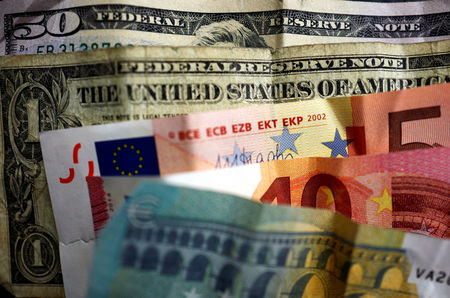
By Trixie Yap
(Reuters) -Oil prices climbed by around 1% on Thursday, reversing some of previous session’s losses, as Middle East tensions kept the market on edge ahead of the U.S. presidential election amid expectations of strong distillates demand in fourth quarter.
Brent crude futures rose 77 cents, or 1%, to $75.73 a barrel by 0655 GMT, while U.S. West Texas Intermediate crude futures climbed 82 cents, or 1.2%, to $71.59 as an exchange of heavy fire between Israel and Hezbollah heightened supply concerns.
Oil prices have gained nearly 4% so far this week, helping to trim last week’s losses of more than 7%.
Oil markets are trying to rebound from last week’s steep sell-off, said independent market analyst Tina Teng in an email, when concerns of weak demand and an oversupply may have caused an overreaction in prices, while the Middle East conflict remains fundamentally unchanged.
Israel launched strikes on the Syrian capital Damascus early on Thursday, Syrian state media said, the latest such attack alongside the war in Gaza.
This followed Israeli strikes on Beirut’s southern suburbs a day earlier and after Hezbollah said it fired precision guided missiles for the first time at Israeli targets.
The intensifying exchanges of fire come as Washington makes a final major push for peace between Israel and Iran-backed groups Hezbollah and Hamas before the Nov. 5 presidential election that could alter U.S. policy in the Middle East.
Phillip Nova senior market analyst Priyanka Sachdeva said in an email that there could be wilder market fluctuations in a critical period in the run up to the election, which will be immediately followed by the Federal Reserve’s November interest rate decision.
Some analysts expect a win for former U.S. President Donald Trump to potentially weigh on oil prices if he pursues policies that could add barrels to already ample supplies in the market.
“Further potential (price) upside may be capped by the U.S. presidential election where…Trump is leading over (Kamala) Harris based on current data from betting markets and Trump has proposed making the U.S. a major oil supplier,” said OANDA’s senior market analyst Kelvin Wong.
While betting markets put Trump ahead, other polls show the result is currently too close to call.

On the oil demand front, support came from stronger demand for distillates, according to JP Morgan analysts in a client note, which highlighted strong travel demand in Asia and consistent drawdowns in distillate stocks in several major markets.
Distillate demand in the fourth quarter might exceed expectations, they added.
This post is originally published on INVESTING.




